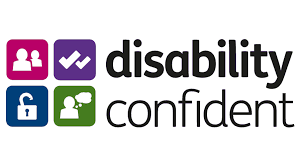Navigating Company Acquisitions Through Strategic Hiring
Company acquisitions are a powerful tool for business growth, with 60% of CEOs identifying them as a top strategy for expansion (PwC, 2023). However, the road to successful integration is often fraught with challenges, with 70% of mergers and acquisitions (M&As) failing to deliver expected value.
A critical factor in determining the success of an acquisition is the effective management of human capital. Strategic hiring plays a pivotal role in achieving long-term goals and building a cohesive workforce.
Here are key strategies to guide your hiring efforts during a company acquisition:
Align Talent Strategy with Acquisition Goals
Before diving into the hiring process, clearly define the strategic objectives of the acquisition. Are you seeking to expand into new markets, integrate cutting-edge technology, or streamline operations?
By aligning your hiring decisions with these goals, you can maximize the value of the acquisition. For instance, if the acquisition aims to acquire talent, prioritize hiring individuals with the specific skills and expertise needed to drive growth.
Bridge Cultural Differences
Cultural clashes can significantly hinder the success of an M&A, accounting for 30% of failed deals (Harvard Business Review). To foster a harmonious work environment, focus on hiring individuals who can bridge cultural divides. These individuals can act as cultural connectors, promoting collaboration and understanding between teams.
Consider hiring leaders who value the strengths of both organizations. By creating a culture of inclusion and trust, you can mitigate the risks associated with cultural differences.
Address Skills Gaps
A common challenge following an acquisition is the identification of skills gaps. Post-acquisition evaluations often reveal shortages in technical or managerial expertise. To address these gaps, prioritize hiring roles that are essential to achieving shared goals.
Additionally, invest in robust onboarding programs to empower new hires and accelerate their integration into the organization.
Retain Key Talent
One of the most significant risks during an acquisition is the loss of key talent. Studies show that 47% of employees consider leaving during M&As due to uncertainty. To retain top talent, implement effective retention strategies, such as:
Clear Communication: Maintain open and transparent communication with employees throughout the acquisition process.
Career Advancement Opportunities: Offer opportunities for growth and development to motivate employees.
Competitive Incentives: Provide competitive compensation and benefits packages to retain valuable talent.
By prioritizing the retention of key talent, you can preserve institutional knowledge and maintain the momentum of the acquired business.
The Bottom Line
Strategic hiring is not merely a tactical exercise; it is a strategic imperative that can significantly impact the success of an acquisition. By aligning talent strategies with acquisition goals, bridging cultural differences, addressing skills gaps, and retaining key talent, businesses can turn acquisitions into long-term wins.
Remember, the true value of an acquisition lies in its people. By prioritizing your workforce, you can unlock the full potential of the deal and drive sustainable growth.
For more information please contact Ami Williams on
ami.williams@markjamessearch.com





